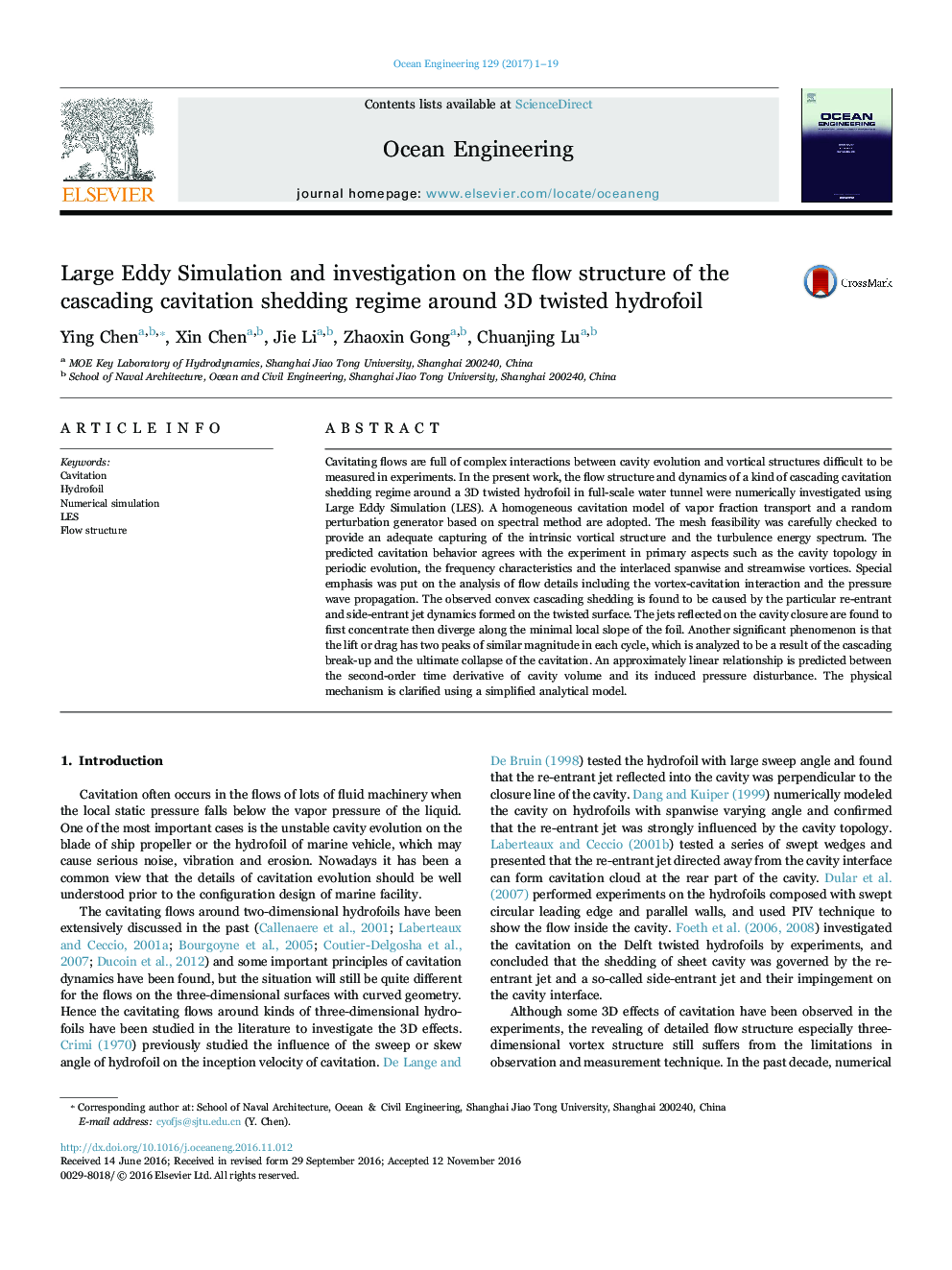| Article ID | Journal | Published Year | Pages | File Type |
|---|---|---|---|---|
| 5474665 | Ocean Engineering | 2017 | 19 Pages |
Abstract
Cavitating flows are full of complex interactions between cavity evolution and vortical structures difficult to be measured in experiments. In the present work, the flow structure and dynamics of a kind of cascading cavitation shedding regime around a 3D twisted hydrofoil in full-scale water tunnel were numerically investigated using Large Eddy Simulation (LES). A homogeneous cavitation model of vapor fraction transport and a random perturbation generator based on spectral method are adopted. The mesh feasibility was carefully checked to provide an adequate capturing of the intrinsic vortical structure and the turbulence energy spectrum. The predicted cavitation behavior agrees with the experiment in primary aspects such as the cavity topology in periodic evolution, the frequency characteristics and the interlaced spanwise and streamwise vortices. Special emphasis was put on the analysis of flow details including the vortex-cavitation interaction and the pressure wave propagation. The observed convex cascading shedding is found to be caused by the particular re-entrant and side-entrant jet dynamics formed on the twisted surface. The jets reflected on the cavity closure are found to first concentrate then diverge along the minimal local slope of the foil. Another significant phenomenon is that the lift or drag has two peaks of similar magnitude in each cycle, which is analyzed to be a result of the cascading break-up and the ultimate collapse of the cavitation. An approximately linear relationship is predicted between the second-order time derivative of cavity volume and its induced pressure disturbance. The physical mechanism is clarified using a simplified analytical model.
Related Topics
Physical Sciences and Engineering
Engineering
Ocean Engineering
Authors
Ying Chen, Xin Chen, Jie Li, Zhaoxin Gong, Chuanjing Lu,
